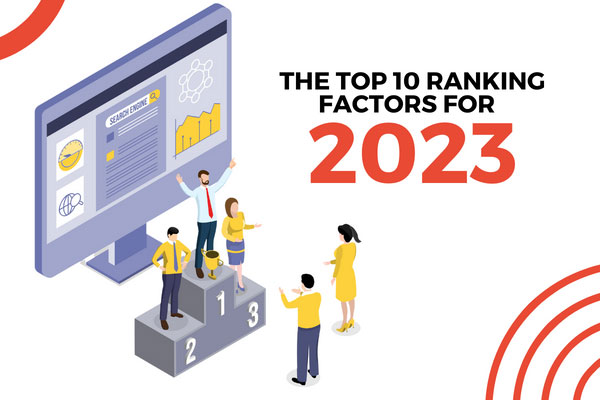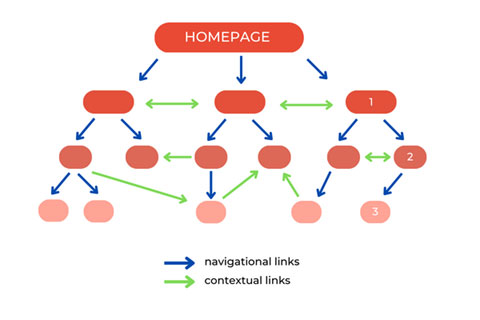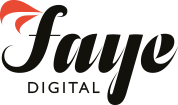
Maximising your SEO rankings: the top 10 factors for 2023
Today Google has become the best companion in our daily life. Whether it is information about a product, service, or an idea, the first thing that comes to our mind is not anything else other than Google. Thus it has become an integral part of our daily life than we could ever imagine.
It is also Google’s mission to organise the world’s information and make it universally accessible and useful and it is doing a pretty good job of it, improvising its standard every day.
The search engine is so popular that it’s many times larger than all of the world’s other search engines put together. Moreover, Google currently holds a whopping 92.18 percent of the worldwide search engine market share.
Appearing in the top position of Google’s search results has become much more important as most people don’t go past the first page of the search engine results page (SERP). Hence, SEO or Search Engine Optimisation has become inevitable.
SEO is the process of aligning a website to Google’s guidelines or ranking factors to gain a prominent place in the SERP. Let us see what ranking factors are and what are the top ranking factors for the year 2023.
What are Google ranking factors?
When a search is performed by someone on Google, it displays all the websites related to that query in an order. The most relevant websites are displayed organically in the top position. The word organic means freely. Google brings out your website for free of cost, purely based on the quality of your website. To determine this quality, Google uses certain criteria known as ranking factors. SEO is the process of tweaking a website to make it comply with the ranking factors and as a result, increase its ranking in the SERP.
There are over 200 ranking factors and the Google has revealed a few of them, the rest is a closely guarded secret. The ranking factors and algorithm may change but in essence what Google tries to assimilate about a website are Expertise, Authority, and Trust (E-A-T). E-A-T is a principle Google’s search quality raters use to determine the quality and effectiveness of search results. So while E-A-T is not a direct Google ranking factor, it still goes hand-in-hand with SEO.
Types of Google ranking factors
The following are the different types of Google ranking factors.
On-page ranking factors:
This refers to the quality of the content on the page and how well the keyword optimisation is done.
Off-page ranking factors:
This refers to the endorsements from other pages on other websites, also known as backlinks.
Technical ranking factors
Technical ranking factors ensure that your website adheres to all technical requirements of Google to achieve improved organic rankings. It comprehends vital aspects such as indexing, delivery of content, crawling, and site construction.
Local ranking factors:
These involve proximity of your business, NAP citations, presence of Google My Business listing, amount of positive online reviews and ratings, content that provides valuable and unique insights, organic click-through rates, the total number of quality backlinks, and a localised website.
There is no single ranking factor that is responsible for higher ranking, rather it is the combination of all the ranking factors that will decide the ranking of your website.
On-page Google ranking factors
These ranking factors are specific to the page and hence the name, On-page. They can be categorised into:
1. Relevant, high-quality content
The single most important ranking factor is the quality of your content. This is about the consistent publication of high-quality content, user engagement, and niche expertise as shown in the chart above. So what makes relevant, quality content?
Trustworthy ―The information is accurate, useful, and free of spammy links.
Readable― The content is well-structured, logical, written conversationally, and not stuffed with keywords, and the keywords are naturally integrated into your page and use a lot of related keywords. (Synonyms)
Fresh ― Your content need to be fresh. To maintain relevancy, you need to write new content regularly and also update any outdated content with new information and keywords relevant to this day.
The keywords match the searcher’s Intent―Using the keyword research tools find out what phrases your audience is using on Google and also research what are the intents behind each keyword.
2. Keyword placement
Once you have done keyword research and decided on what keywords you are going to use on the pages and rank for them, you need to insert them into specific places on your page. This includes:
Title tag ― It’s simply the headline on the SERP (search engine results page).
H1 title ― a title that appears on the page.
H2 headings― These define the second-level headings on your webpage. They are important because they make your page more user-friendly by making your content more readable and accessible.
URL― keep your URL short and clean as well.
In the body ― Make the keyword presence natural.
Meta Description―A page’s content that summarises what users can see in the search results. Make sure it accurately sums up your page and entices your visitors to click.
3. Image optimisation
When you optimise images for the web, you’re reducing page load time and increasing site speed. It also helps Google’s image search feature and also its inclination toward visual. This is how you optimise the images for SEO.
Compress and resize:
Use an image compressor such as Compress Now, JPEG optimiser or Optimizilla to keep your file size low. The ideal size would be 70-100KB or less if you can. JPEGs are usually more SEO-friendly than PNGs, and offer better compression levels. Also, make sure that your image’s width is not more than 1000 px.
Assign alt text:
Alt text is the written copy that appears in place of an image on a webpage if the image fails to load on a user’s screen. These texts help Google see your images. Make your alt texts short but descriptive. Alt texts also help visually-impaired readers who use screen readers to browse your website and show up the text if the image fails to download.
Use authentic images:
To keep the users engaged use charts, screenshots, and illustrations instead of unauthentic stock images. Use images that are directly related to your products, services, or brand.
Include the keyword:
Include the keywords not only in the alt texts but also in the image file names.
A picture with a correct alt description and a keyword-rich filename will pull your site up in SERPs and it is a good practice to use dashes instead of spaces in the file names because spaces by default will be replaced with some junk characters which will make your visitors feel doubtful about your site.
4. Niche expertise

To rank well, quality content alone is not enough, you should publish high-quality content regularly on a particular niche so that Google will perceive you as an expert and a trusted source in that niche. For example, if you are a business selling cars, then you need to provide value to car lovers by providing information that assists them in understanding cars or purchasing a car.
Hub and spoke method is a way to build out your niche expertise and this model allows you to generate content in a more structured way around a broad topic.
The hub is the main page that covers the topic/keyword we want to create more authority around and rank higher. The hub or pillar page serves as the main resource for that topic, and your various H2s in the hub page cover different child keywords within that topic. The spokes are the pages that cover the H2s of the hub/pillar page in depth.
Since the spokes (cluster pages) link to and from the pillar content, as well as to each other, all your links are neatly organised around the same topic.
Technical Google ranking factors
As seen earlier, Technical SEO refers to website and server optimisations that help search engine spiders crawl and index your site more effectively (to help improve organic rankings). Technical SEO is just one piece of the whole SEO puzzle. Here are the technical strategies for improving your rank:
5. Page Speed
Every user expects your website to load faster and that is what Google expects too. If your page speed is low, your visitors’ bounce rate will increase and your page rank will decrease.
6. Mobile-friendliness
Google has made it clear that it will crawl the mobile version of all the sites for ranking and what it means is that even if your desktop version is completely flawless, it will suffer a lot if its mobile version has issues. Most content management systems allow you to preview your site and make adjustments for mobile/smaller screens.
7. Core Web Vitals
On May 28, 2020, Google introduced a new ranking factor called Core Web Vitals.
Core Web Vitals – which measure and evaluate the speed, responsiveness, and visual stability of websites – offers more opportunities to boost your ranking. The Core Web Vitals report shows how your pages perform, based on real-world usage data (sometimes called field data).
The Core Web Vitals is made of the following elements.
LCP (largest contentful paint)
How long it takes to render the largest content element visible in the viewport
FID (first input delay):
The time taken by the browser to respond to an interaction by the user such as a click on a link, tap on a button, and so on.
CLS (Cumulative Layout Shift):
The unexpected shifting of webpage elements while the page is still downloading.
You can improve the Core Web Vitals by employing following methods:
- Implement a caching solution
- Eliminate render-blocking resources
- Defer loading of JavaScript
- Use a content delivery network
- Properly size and optimise images
- Implement Lazy Loading
- Optimise your website fonts
- Upgrade your WordPress hosting
8. Website architecture

Search engines crawl and index different elements of content on your website. An efficient and clever internal linking help the search engines and the users find information without much struggle. Internal linking or hyperlinks refer to hyperlinks you create from one page to another page on the same website.
The more organised your internal linking structure is, the more points of access you create to any particular page and the easier it is for search engines and users to find what they are looking for. Ideally, it should not take more than 3 clicks to go to a particular page.
Topic clusters are another way of organising the content neatly which makes your content easier to navigate and the readers don’t have to visit multiple sites to find what they are looking for.
Also, it’s a good idea to do a technical SEO audit of your site every couple of months to spot things such as 404 errors, redirect loops, and broken links and fix them.
9. Site Security
The letter ‘s’ in HTTPS:// stands for ‘secure’, and the way you get your site to be an HTTPS site rather than an HTTP site is to get an SSL (Secure Socket Layer) certificate. The following are the top benefits of having an SSL certificate:
- SSL protects customer data
- Protects from Google warning
- SSL boost website SEO rankings
- SSL increases customer trust & revenue
- SSL protects from phishing and other attacks
- SSL helps in regulatory compliance
There are various types of SSL certificates available each one offering a different level of security. Some of the best places to buy an SSL certificate are Comodo, SSL.com, DigiCert, Sectigo, Alpha SSL, Entrust, and Global Sign.
Off-page Google ranking factors:
Off-page ranking factors are made of things that are outside of your websites such as social media platforms, influencers, and other websites, but what is at the core of any off-page SEO strategy is ‘Backlinks’.
10. Backlinks
A backlink is a link to your website from any other website. When your website has a lot of backlinks from other websites, Google interprets that your website is a good one because other websites link to your website as a reference. But remember, one link from a high-quality website has more value than many links from many low-quality websites. Here are 3 ways to create backlinks:
Original, informative, and engaging content: If your content offers great value to your audience you don’t have to exert much effort to build backlinks. It will happen naturally. Therefore, make sure to produce hard-to-replicate content that is original, data-driven, and represents thought leadership.
Cold outreach: Natural link-building is very time-consuming and you need to push the process a little bit by outreaching out to authors who manage websites related to you and requesting them to link back to your articles.
Guest posts: Another method for building backlinks is guest blogging. Rather than just asking for a link, offer to write a post for that site. You can include a backlink to your site in the post or in your author bio.
Final thoughts
Whether it is a small business, mid-market enterprise, or large enterprise visibility on search engines, both paid and organic, is essential to gain trust, and credibility and expand brand awareness, increase leads and drive revenue. Just remember that when it comes to SEO, there is no such thing as a silver bullet. You may optimise your website for almost all the ranking factors today but it does not mean that you will see the results tomorrow.
SEO benefits take a considerable amount of time and patience to see results. SEO optimisation requires ongoing efforts to see results. Make sure your website offers great value to your target audience and it will pay you off in due course.
If you think you cannot go on this journey alone and needs a helping hand, then we are here for you. Faye Digital is a well-established and well-reputed digital marketing agency based in Melbourne, Australia with immense experience in digital marketing. Check out our services.
